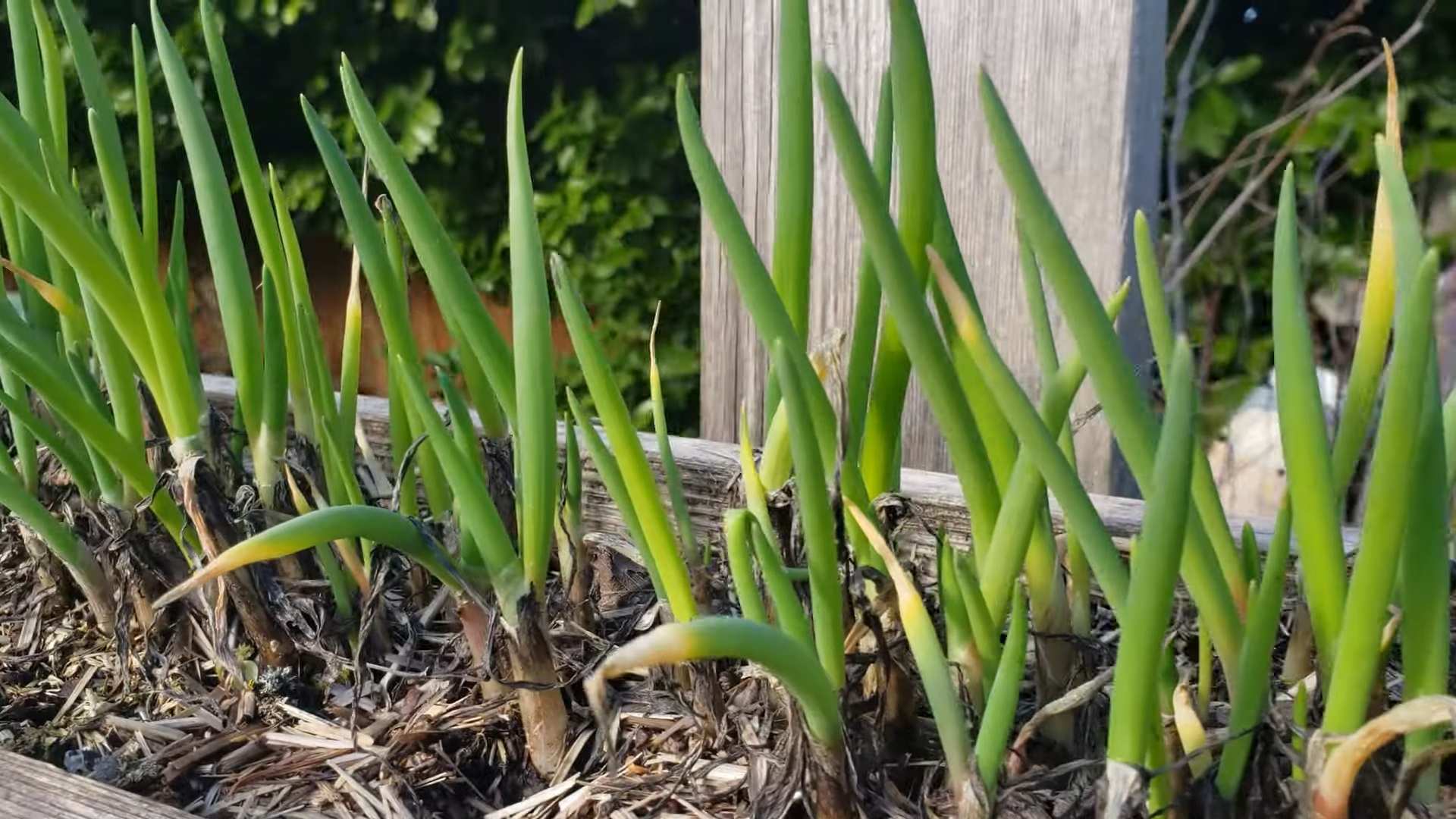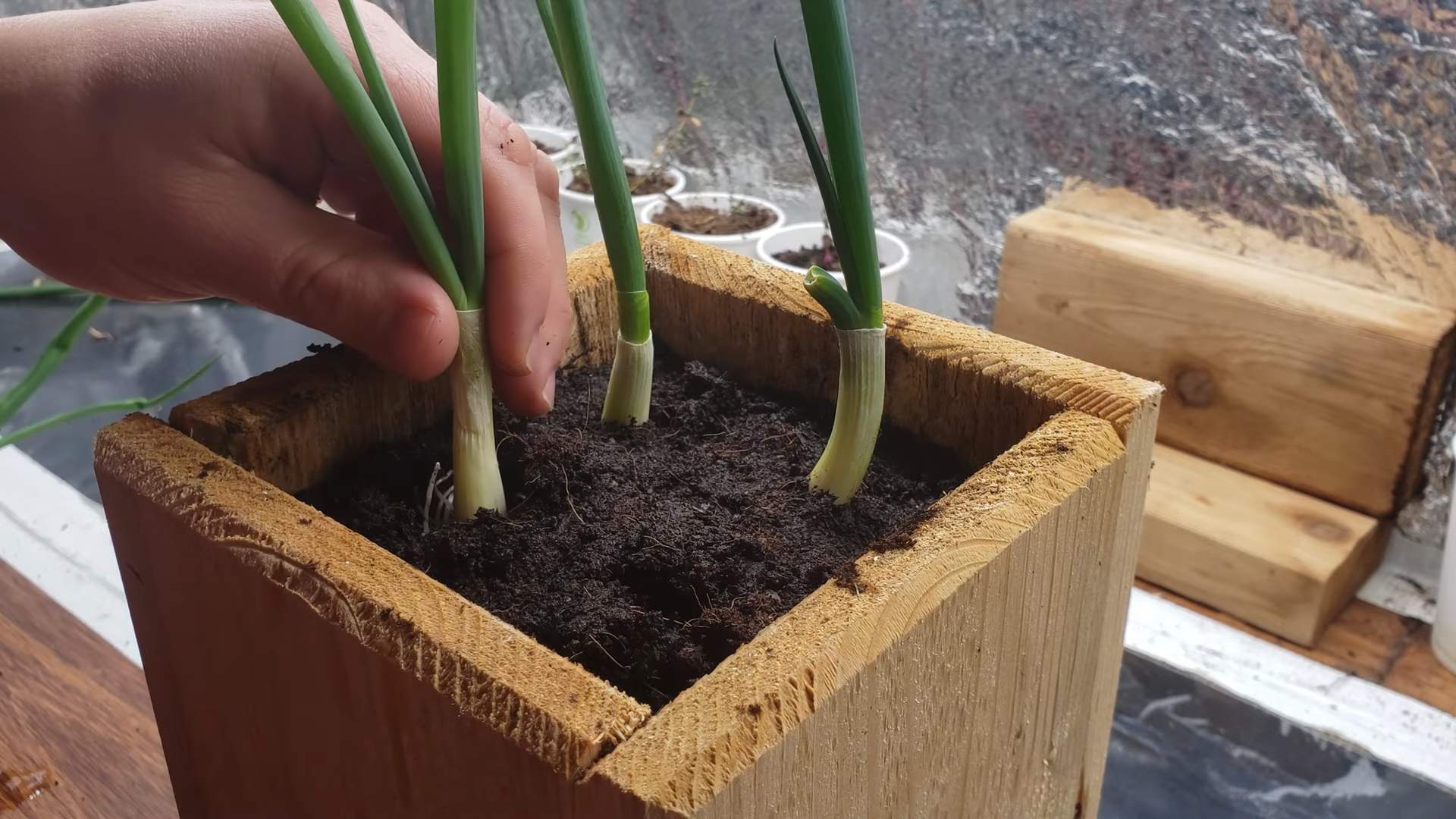Regrow Green Onions from Scraps: Unlock the secret to endless green onions right in your kitchen! Have you ever tossed the root ends of your green onions, thinking they were destined for the trash? Well, prepare to be amazed! This simple DIY trick will not only save you money but also provide you with a constant supply of fresh, flavorful green onions for all your culinary creations.
The practice of regrowing vegetables isn’t new; in fact, it echoes the resourcefulness of generations past. From victory gardens during wartime to the sustainable practices of ancient civilizations, the ability to cultivate food from scraps has always been valued. It’s a testament to our connection with nature and our desire to minimize waste.
In today’s fast-paced world, convenience often trumps sustainability. But what if you could have both? That’s where this regrow green onions from scraps hack comes in. Imagine never having to run to the store just for a few green onions. Think of the satisfaction of watching new growth emerge from something you were about to discard. I’m going to show you how easy it is to transform those humble scraps into a thriving, self-sustaining source of fresh flavor. It’s a small change with a big impact, both on your wallet and the environment. Let’s get started!

Regrowing Green Onions from Scraps: A Gardener’s Delight!
Hey there, fellow plant enthusiasts! Ever find yourself tossing the root ends of your green onions after using the leafy tops? Stop right there! I’m going to show you how to turn those kitchen scraps into a never-ending supply of fresh green onions. It’s super easy, incredibly rewarding, and a fantastic way to reduce waste. Trust me, once you start, you’ll never buy green onions again (well, maybe sometimes!).
Why Regrow Green Onions?
Before we dive in, let’s talk about why this is such a great idea:
* Save Money: No more buying green onions every week!
* Reduce Waste: Give those scraps a new life instead of sending them to the landfill.
* Fresh Herbs on Demand: Always have fresh green onions ready for your culinary creations.
* Easy and Fun: It’s a simple project that even kids can enjoy.
* Space-Saving: Green onions don’t need a lot of space, making them perfect for small gardens or even apartment living.
What You’ll Need
Okay, let’s gather our supplies. The beauty of this project is that you probably already have everything you need:
* Green Onion Scraps: The bottom 1-2 inches of your green onions, with the roots still attached. The more roots, the better!
* A Glass or Jar: Any small glass or jar will do. I like to use mason jars or even old yogurt containers.
* Water: Tap water is fine.
* Potting Soil (Optional): If you want to transplant your green onions to a pot or garden later.
* A Small Pot (Optional): For transplanting.
* Scissors or a Knife: For trimming (optional).
Regrowing in Water: The Quick and Easy Method
This is the simplest way to regrow green onions, and it’s perfect for beginners.
1. Prepare the Scraps: Take your green onion scraps and gently rinse them under cool water to remove any dirt or debris. You can trim the very top of the green part if it looks a little wilted, but be sure to leave at least an inch or two of green.
2. Place in Water: Fill your glass or jar with enough water to cover the roots, but not so much that it submerges the entire white part of the onion. You want the roots to be fully immersed, but the white part mostly exposed to air.
3. Find a Sunny Spot: Place the jar in a sunny windowsill or another location that receives plenty of light. Green onions need sunlight to grow.
4. Change the Water Regularly: This is crucial! Change the water every 1-2 days to prevent bacteria growth and keep the water fresh. Stagnant water can lead to rot.
5. Watch Them Grow: Within a few days, you should start to see new green shoots emerging from the top. It’s amazing how quickly they grow!
6. Harvest and Repeat: Once the green onions have grown to a usable length (usually a few inches), you can harvest them by snipping off the green tops with scissors. Leave about an inch or two of green so they can continue to grow. And that’s it! You can keep regrowing them in water indefinitely, just keep changing the water and harvesting as needed.
Transplanting to Soil: For Bigger, Stronger Onions
While regrowing in water is convenient, transplanting to soil will give you bigger, healthier green onions.
Preparing for Transplanting
1. Let Them Grow Roots: Follow steps 1-5 of the water method above. Let the green onions grow in water for about a week or two, until they have a good network of roots. The more roots, the better the transplant will take.
2. Choose a Pot: Select a small pot with drainage holes. A 4-6 inch pot is a good size for a few green onion scraps.
3. Prepare the Soil: Fill the pot with a good quality potting mix. You can also add some compost to enrich the soil.
Transplanting Process
1. Make a Hole: Use your finger or a small tool to create a hole in the soil that’s deep enough to accommodate the roots of your green onion.
2. Gently Remove from Water: Carefully remove the green onion from the water, being careful not to damage the roots.
3. Place in the Hole: Place the green onion in the hole, making sure the roots are spread out.
4. Cover with Soil: Gently fill the hole with soil, covering the roots. Leave the white part of the onion exposed.
5. Water Thoroughly: Water the pot thoroughly until water drains out of the drainage holes.
6. Find a Sunny Spot: Place the pot in a sunny location.
Caring for Your Soil-Grown Green Onions
1. Water Regularly: Keep the soil consistently moist, but not soggy. Water when the top inch of soil feels dry to the touch.
2. Fertilize (Optional): You can fertilize your green onions every few weeks with a diluted liquid fertilizer to encourage growth.
3. Harvest and Repeat: Just like with the water method, you can harvest the green tops as needed. The green onions will continue to grow and produce new shoots.
Troubleshooting
Sometimes, things don’t go exactly as planned. Here are some common issues and how to fix them:
* Yellowing Leaves: This could be a sign of overwatering or underwatering. Make sure the soil is moist but not soggy. If you’re growing in water, make sure you’re changing the water regularly. Yellowing can also indicate a nutrient deficiency, so consider fertilizing if you’re growing in soil.
* Rotting Roots: This is usually caused by stagnant water. Make sure you’re changing the water frequently if you’re growing in water. If you’re growing in soil, make sure the pot has good drainage and that you’re not overwatering.
* Slow Growth: This could be due to lack of sunlight. Make sure your green onions are getting plenty of light. It could also be due to nutrient deficiency, so consider fertilizing.
* Pests: Green onions are generally pest-resistant, but occasionally they can be affected by aphids or other small pests. If you notice pests, try spraying them with a mixture of water and dish soap.
Tips and Tricks for Success
Here are a few extra tips to help you get the most out of your green onion regrowing adventure:
* Use Fresh Scraps: The fresher the scraps, the better the chances of success. Try to regrow them as soon as possible after using the green tops.
* Experiment with Different Varieties: There are many different varieties of green onions, so experiment to see which ones grow best for you.
* Rotate Your Crops: If you’re growing in soil, consider rotating your crops every few months to prevent nutrient depletion.
* Don’t Be Afraid to Experiment: Gardening is all about experimentation! Don’t be afraid to try different things and see what works best for you.
* Enjoy the Process: Regrowing green onions is a fun and rewarding experience. Enjoy watching them grow and harvesting your own fresh herbs!
I hope this guide has inspired you to start regrowing your own green onions. It’s a simple, sustainable, and satisfying way to add fresh flavor to your meals. Happy gardening!

Conclusion
So, there you have it! Regrowing green onions from scraps isn’t just a fun kitchen experiment; it’s a genuinely practical and rewarding way to reduce food waste, save money, and have a constant supply of fresh, flavorful green onions right at your fingertips. This simple DIY trick transforms what would normally be tossed into the compost bin into a vibrant source of culinary delight.
Why is this a must-try? Because it’s incredibly easy! Seriously, if you can put a green onion in a glass of water, you can do this. It requires minimal effort, no special equipment, and very little space. Imagine the satisfaction of snipping fresh green onions to garnish your soups, salads, tacos, or stir-fries, knowing you grew them yourself from something you were about to throw away. It’s a small act of self-sufficiency that can make a big difference.
Beyond the basic water method, there are a few variations you can explore. Once your green onions have established roots in water, consider transplanting them into a pot of soil. This will provide them with more nutrients and allow them to grow even larger and stronger. You can even plant them directly in your garden if you live in a suitable climate. Another variation is to experiment with different types of containers. While a glass of water works perfectly well, you could also use a small jar, a repurposed yogurt container, or even a dedicated hydroponic setup if you’re feeling ambitious.
Don’t be afraid to experiment with different light conditions as well. While green onions thrive in bright, indirect light, you might find that they do just fine in a slightly shadier spot. Observe how your green onions are growing and adjust their environment accordingly. Remember, gardening is all about learning and adapting.
We wholeheartedly encourage you to give this DIY trick a try. It’s a fantastic way to get kids involved in gardening, teach them about sustainability, and show them where their food comes from. It’s also a great way to add a touch of green to your kitchen, even if you don’t have a green thumb.
But the best part is the taste! Freshly regrown green onions have a vibrant, slightly peppery flavor that’s far superior to store-bought ones that have been sitting on the shelf for days. You’ll notice the difference immediately.
So, grab those green onion scraps, find a glass of water, and get started! We’re confident that you’ll be amazed at how easy and rewarding it is to regrow your own green onions. And once you’ve experienced the joy of harvesting your own homegrown green onions, we’d love to hear about it! Share your experiences, tips, and photos with us in the comments below. Let’s create a community of green onion growers and inspire others to embrace this simple and sustainable practice. Let us know if you have any questions, or if you have any tips for regrowing green onions that you would like to share. Happy growing!
Frequently Asked Questions (FAQ)
How long does it take for green onions to regrow?
Generally, you’ll start to see new growth within a few days. Within a week or two, you should have a noticeable amount of new green onion stalks. The speed of growth depends on factors like light, temperature, and the initial health of the green onion scraps. Be patient, and you’ll be rewarded with fresh green onions in no time.
What part of the green onion do I need to regrow it?
You need the white part of the green onion, including the roots (if any are still attached) and about an inch or two of the green stalk. This is the part you typically discard after using the green tops. Make sure to cut the green onions about an inch or two above the roots when you’re using them in your cooking, leaving enough of the white base for regrowth.
Do I need to change the water regularly?
Yes, it’s important to change the water every one to two days. This helps prevent bacterial growth and keeps the water fresh, which is essential for healthy regrowth. Stagnant water can lead to rot and hinder the growth process.
Can I regrow green onions in soil instead of water?
Absolutely! While water is a great starting point, transplanting your green onions to soil will provide them with more nutrients and allow them to grow larger and stronger. Once the roots have developed in water (usually after a week or two), you can carefully transplant them into a pot filled with well-draining potting mix.
What kind of soil is best for regrowing green onions?
A well-draining potting mix is ideal. You can also amend your soil with compost or other organic matter to provide extra nutrients. Avoid heavy clay soils, as they can retain too much moisture and lead to root rot.
How much sunlight do green onions need to regrow?
Green onions thrive in bright, indirect sunlight. A spot near a sunny window is perfect. Avoid direct sunlight, especially during the hottest part of the day, as it can scorch the leaves. If you don’t have a sunny window, you can also use a grow light.
How often should I water green onions grown in soil?
Water them regularly, keeping the soil consistently moist but not waterlogged. Check the soil moisture by sticking your finger into the soil. If the top inch feels dry, it’s time to water.
Can I regrow green onions indefinitely?
While you can regrow green onions multiple times from the same base, the regrowth will eventually slow down and become less vigorous. After a few cycles, it’s best to start with fresh green onion scraps for optimal results.
My green onions are turning yellow. What am I doing wrong?
Yellowing leaves can be a sign of several issues, including overwatering, underwatering, lack of nutrients, or insufficient sunlight. Make sure you’re changing the water regularly, providing adequate sunlight, and using a well-draining potting mix if you’ve transplanted them to soil. If the problem persists, consider adding a diluted liquid fertilizer to the water or soil.
Can I use fertilizer to help my green onions grow faster?
Yes, you can use a diluted liquid fertilizer to give your green onions a boost. Use a balanced fertilizer (e.g., 10-10-10) and dilute it to half strength. Apply the fertilizer every few weeks, following the instructions on the fertilizer package.
Are there any pests or diseases that affect regrown green onions?
Green onions are generally pest-resistant, but they can occasionally be affected by aphids or thrips. If you notice any pests, you can try washing them off with a strong stream of water or using an insecticidal soap. Root rot can also be a problem if the soil is too wet.
Can I regrow other types of onions besides green onions?
While you can try regrowing other types of onions, green onions are the easiest and most successful to regrow from scraps. Other onions may require more specific conditions and may not regrow as readily.
Is it safe to eat regrown green onions?
Yes, it is perfectly safe to eat regrown green onions, as long as you’ve followed proper hygiene practices. Wash the green onions thoroughly before using them in your cooking.
What can I do with my regrown green onions?
The possibilities are endless! Use them as a garnish for soups, salads, tacos, stir-fries, and other dishes. Add them to omelets, dips, and sauces. They’re a versatile ingredient that can add a fresh, flavorful touch to any meal.
How do I harvest my regrown green onions?
Simply snip off the green stalks with scissors or kitchen shears, leaving about an inch or two of the base intact. This will allow the green onions to continue regrowing. Harvest as needed, and enjoy your fresh, homegrown green onions!




Leave a Comment